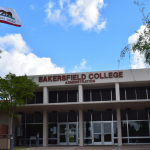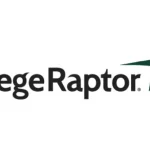Written by: Damon Vangelis, Founder & CEO
Amid a continuing global pandemic and social unrest, colleges are actively confronting immediate challenges to keep their institutions on a steady footing. The challenges include: budget cuts, staff furloughs, integration of new technologies, safe re-opening, and enrollment uncertainty.
Collectively, these challenges will force some hard decisions. The choices colleges make will have a lasting impact on the institution for years into the future. And short-term cuts could strain student advising and support, ultimately impacting access, completion, and student success.
There are reasons for concern that access and student success will be hurt in the coming year. And yet, there is also cause for thinking a “New Access” may emerge in the coming years that is better for the students who can benefit the most from higher education. How things play out will depend on the choices college leaders make in the coming year.
If colleges use the current opportunity (many are) to accelerate technological change, evolve how they deliver education, and find ways to be more affordable, there is the real possibility to improve and accelerate access to education when things get to a “new normal”.
Expansion of Access / Historical Parallels
Despite the power of education, it is not always accessible. And there are many costs to our society of education not being accessible. One is individuals and communities being left behind. Being “left behind” today — either without education or with a weak education combined with debt — has big consequences for the individual and our society. If the “system” fails a student, it is so hard for the student to catch up.
And yet, if we look back over the past 75 years, we can see three distinct eras in which access was expanded:
Post WWII years 1945-50s. The GI Bill gave many returning soldiers a path to higher education amid the post-WWII peace and transition to domestic economic growth and modernization.
1960s-70s. There was national consensus for greater federal involvement in higher education, to expand access, which led to new financial aid programs. This was against the backdrop of the Vietnam War, Civil Rights Movement, and greater global economic competition.
1990s-2000s. Further expansion of federal financial aid programs in the form of the Direct Lending program, tax credits, the disbandment of the FFELP program, and creation of loan forgiveness programs. These were enacted against the backdrop of continued growth in higher education enrollment, higher costs, and growing student debt levels.
A “New Access” Emerging in the 2020s
Access comes in many forms, and my expectation is that a broad reassessment will take place in the coming years. I anticipate the reassessment will be led primarily by colleges themselves. Why? Because the current higher education model is challenged externally by disruptive technology and from within due to its high cost and limited student advising. Colleges will have an opportunity to lead, to find opportunities within these challenges.
Four themes are emerging that have the potential to expand access:
Technology
Colleges need to show their value more than ever. Lots of choices for students are emerging. Local delivery models are no longer the only option. There is new competition from online education and by the expansion of some colleges to new geographies. And colleges need to embrace technology to scale their services to meet the expectations of today’s students.
Flexibility
The urgency of the COVID-19 pandemic has colleges assessing which courses need physical in-person instruction and which one can be provided online and on-demand. I anticipate that colleges will rapidly embrace flexibility and multiple ways of delivering education.
Advising
A persistent theme I hear from college leaders is that there is insufficient student support and advising to meet student demand. The Guided Pathways model is proving to be a positive development. I anticipate that this is an area that will continue to receive renewed attention and focus in the coming years.
Affordability
As colleges embrace flexibility and expand their advising capacity, more “skinny” and “focused” pathways for students should emerge. And opportunities to access education for a lower cost will likely be created.
Who will benefit from the “New Access”?
These emerging trends should benefit the students who need flexibility the most. Students who have the greatest financial need. Students who are juggling family, work, and college all at the same time. Rural students who spend time commuting. And first-generation students who are navigating “the system” for the first time, and students that do not have parents or siblings at home who can guide them. The ones who make it through high school, but are nonetheless stuck at the lowest-end of the socioeconomic ladder.
In nearly 20 years of working with colleges to help make higher education more accessible, I have been astounded by the commitment that so many higher education professionals have to helping students. And yet, so many students are left behind by the complexities and so many are saddled with the high costs. It’s my hope that a “New Access” — one that embraces the four pillars of technology, flexibility, strong advising, and affordability — will emerge in the coming years that makes higher education accessible for all who can benefit from it.















